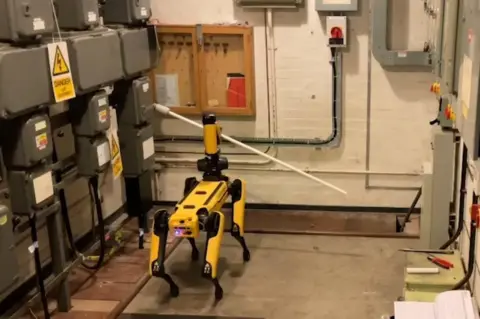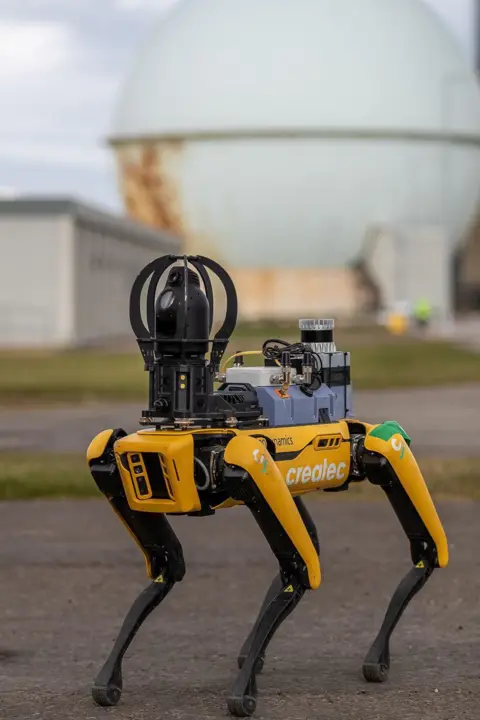Robot dog flips crane switch at nuclear site
 NRS
NRSA robot dog has been sent into a potentially hazardous area of a nuclear power site to switch back on a mothballed piece of equipment.
The four-legged machine - called Spot - reactivated a crane needed for lifting containers of waste at Dounreay near Thurso.
Due to safety restrictions, workers are not allowed to go near a switchboard to power up the machine. The crane had not been operational for about two years.
Spot has an attachment that allowed it to grip a short pole which it used to push the "on" button and start the crane.
Dounreay was opened 70 years ago as an experimental nuclear power site and is now being decommissioned and the site shutdown.
Engineers from the Robotics and Artificial Intelligence Collaboration (RAICo), a collaboration to develop remotely operated solutions for nuclear decommissioning, worked on the solution to powering up the crane.
A week of trials was held in a storeroom using a mock-up switchboard before Spot was deployed inside part of Dounreay called the fuel cycle area.
Nuclear Restoration Services (NRS), which runs the site, said there was an audible "clunk" noise when the switch was flipped.
 NRS
NRSThe robot previously mapped out a four-storey radioactive facility at the nuclear site, a job that required it to climb several flights of stairs in darkness.
Kate Canning, of the Nuclear Decommissioning Authority (NDA), said the development of robots at the site helped to keep staff safe.
Over the years, a snake-like robot inspected a potentially hazardous part of a redundant laboratory that had not been seen for more than 40 years.
Another device, described as a hi-tech worm, was used to probe the condition of a pipeline once used to discharge radioactive effluent.
